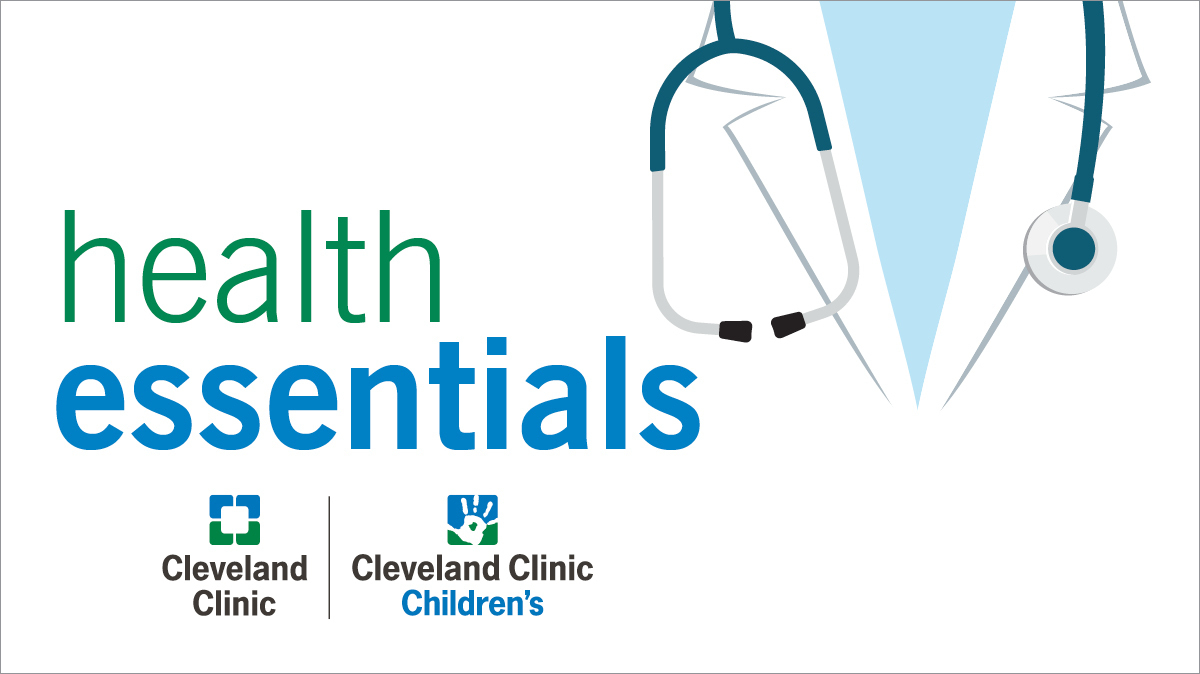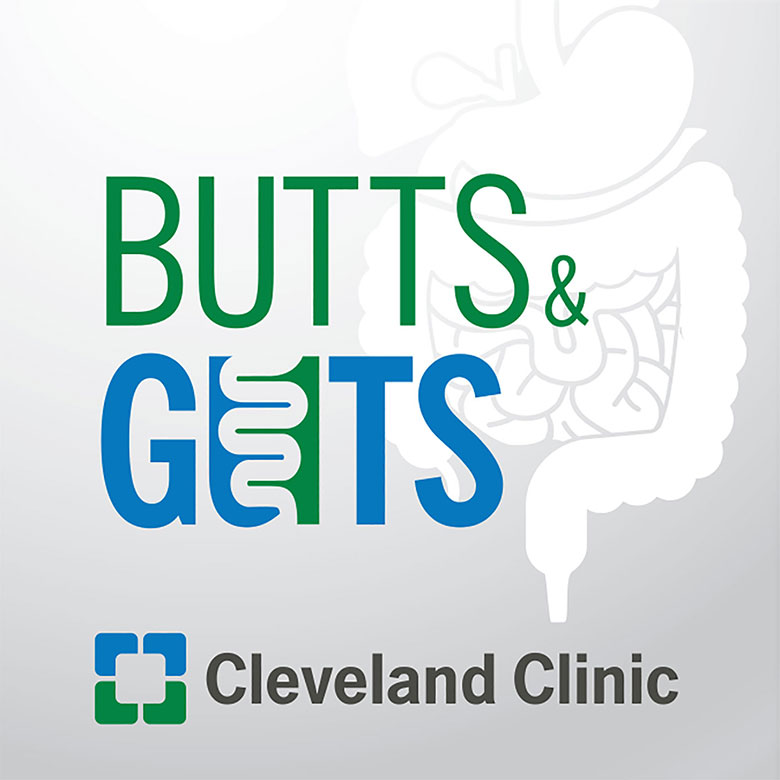How to Minimize Fine Lines and Wrinkles with Cosmetic Injections with Dr Shilpi Khetarpal

Subscribe: Apple Podcasts | Podcast Addict | Spotify | Buzzsprout
How to Minimize Fine Lines and Wrinkles with Cosmetic Injections with Dr Shilpi Khetarpal
Podcast Transcript
Nada Youssef: Hi, thank you for joining us. I'm your host, Nada Youssef, and today we're talking about facial fillers and injectables are growing in popularity around the world. These procedures are minimally invasive and performed in a safe and effective way. They're perfect for those who want to reduce the signs of aging but who aren't ready for cosmetic surgery. Fillers can plump thin lips, restore facial volume and fullness, soften facial creases and wrinkles, and even improve the appearance of scars.
Nada Youssef: Today we're here to demonstrate how these treatments can be done in a short office visit with little to no recovery time at all. Here with us today to answer your questions and to demonstrate a lip filler, also known as soft tissue augmentation, we have the Cleveland Clinic dermatologist, Dr. Shilpi Khetarpal. Thank you so much for being here today.
Dr. Shilpi Khetarpal: Thank you for having me.
Nada Youssef: If you want to just introduce yourself to our viewers.
Dr. Shilpi Khetarpal: Sure. So, hi. Good afternoon. My name is Dr. Shilpi Khetarpal. I am a cosmetic dermatologist here at the Cleveland Clinic. We're very lucky to have a wonderful patient, Alexis, with us today who has beautiful lips. We're just gonna do some soft, subtle lip enhancement with a filler called Juvederm Volbella, which is one of the newer fillers that came onto the market about a year ago. You'll see it's very quick, safe, effective, very simple, and her lips are gonna look really nice and natural and just enhanced.
Nada Youssef: So what's the difference between this new product versus the years before?
Dr. Shilpi Khetarpal: So that's a great question. So this new technology has basically the ability for fillers to last much longer. 18 months ago, two years ago, the fillers in the lip region would last anywhere from maybe 6 to 12 months. Now we're finding Volbella's lasting 1 to 2 years. This newer technology, it's soft, it's subtle, it doesn't look stiff. It gives nice enhancement but it's lasting much longer, which is great.
Nada Youssef: With Alexis, was there anything we have to prepare for this procedure beforehand?
Dr. Shilpi Khetarpal: A couple things, we asked Alexis to avoid anything that could thin her blood. So things like ibuprofen, aspirin, any herbal supplements. That just makes it more likely that someone can get a bruise, so we ask the week before to stop that. Alexis has no history of cold sores. If someone did, would put them on some medication that can minimize that risk of something popping up in that area. Other than that, we put some topical anesthetic on to keep her comfortable. That goes on for about 20 minutes; it's an ointment, and then she should be very comfortable throughout the procedure.
Nada Youssef: Okay, so the numbing agent goes on top?
Dr. Shilpi Khetarpal: Yep.
Nada Youssef: ... and below both lips?
Dr. Shilpi Khetarpal: Exactly, so it goes around the lips on the border and on the lip itself, and it just looks like a Vaseline, almost like a lip gloss.
Nada Youssef: Okay, great, go right ahead.
Dr. Shilpi Khetarpal: Great, let's get started.
Nada Youssef: Show us what you've got.
Dr. Shilpi Khetarpal: So we have Alexis here. This is her first time getting any kind of fillers. So the filler we're using today, as we mentioned, is called Juvederm Volbella. It is a hyaluronic acid. So we have hyaluronic acid in our skin and basically, we're using a natural substance, it's a gel that's just going to enhance her natural lips.
Dr. Shilpi Khetarpal: So first thing, we're going to wipe this ointment off. You can see it's a little bit shiny. Then we're also going to wipe, put some alcohol, to make sure her skin is nice and clean. Alexis, sorry about the smell. The taste and the smell. So now that we have her lips nice and clean, we're going to go ahead and get started.
Dr. Shilpi Khetarpal: The fillers come in a prefilled syringe, so once we use a syringe on Alexis, this becomes her syringe, and we'll probably use most of the contents.
Dr. Shilpi Khetarpal: ... started here. You can see Alexis has really, really nice lips. We want to make sure that we kind of analyze the proportion of lips, so the upper lip is always a little bit smaller than the lower lip. We look at this one to 1 1/2 ratio. In certain ethnicities that does change, so we're going to maintain that balance while we augment Alexis lips.
Dr. Shilpi Khetarpal: Alexis, you're just going to feel my touch and a little pinch. So we'll just kind of line around the lip first and enhance the border. One, two, three, a little pinch. As you can see, Alexis is very comfortable. We'll start to see the improvement and results right away. So put a small amount just in the border of the lip.
Dr. Shilpi Khetarpal: Alexis, you doing okay?
Alexis: Mm-hmm (affirmative).
Dr. Shilpi Khetarpal: Great. And then we'll do a little bit on the lower lip. Bear with me, a little pinch. One, two, three.
Dr. Shilpi Khetarpal: So this is just outlining Alexis's natural lip; we actually haven't put any product in the lip itself, so we're just kind of doing some subtle, nice enhancement.
Dr. Shilpi Khetarpal: A little pinch. One, two, three. Wonderful. Okay, Alexis, just gently open your mouth. We're going to put a little bit now to enhance the shape and size of the upper lip. A little bit right there. Good. Gently close.
Dr. Shilpi Khetarpal: Now, we'll go to the other side and finish on the other half of the lip. Alexis, how's your discomfort?
Alexis: I really don't feel anything.
Dr. Shilpi Khetarpal: Great. Excellent. Okay, just a little drop on this side. Here's one, two, and three. Little pinch. You can see that product flowing nice, beautifully. And little bit more on this side. One, two, three. Great, and we'll just finish with the drop on the lower lip. One, two, three. Perfect.
Dr. Shilpi Khetarpal: So, that's it for the injection part. Now, you can see Alexis has a little bit of swelling. I typically tell people about 20% of what they see is swelling. To minimize the swelling, we will give her some ice, but the full effect, even though she'll see improvement now, it takes about a month for the filler to incorporate into the skin and to see the full effect.
Dr. Shilpi Khetarpal: If there's any areas that look like they're oozing, which they're not, we would hold pressure, but I'm gonna give Alexis an ice pack at this point.
Nada Youssef: Do people usually get top and bottom lip done at the same time? Do people kind of pick and choose?
Dr. Shilpi Khetarpal: You know, I think it varies based on person-to-person. A lot of people have a fuller lower lip, they may just want to enhance the upper lip, but I think it varies just based on what their end result is. I would say almost everyone gets upper lip enhancements, lower is probably 50-50.
Nada Youssef: Oh, okay. So, that's it? She's done then?
Dr. Shilpi Khetarpal: Yeah she's done.
Nada Youssef: That was super fast.
Nada Youssef: ... after the procedure she should not be doing?
Dr. Shilpi Khetarpal: So, I recommend ice. Ice just helps with the swelling, minimizes discomfort; other than that, there is really no restrictions. She can do whatever she wants. We do recommend no dental work for two weeks after, just because, although fillers are safe and there's a very low risk of infection, we just don't want her to have any dental work for two weeks with the risk of infection can go up. But ice, and then she can do anything else she feels like.
Nada Youssef: Okay, great, and then how about the fillers? Are there different types of fillers that can be used on these kind of things?
Dr. Shilpi Khetarpal: Absolutely, so the most common family of fillers are the hyaluronic acid. They vary based on how thick or thin they are, so one we use is very thin, very delicate, but there are thicker ones. When we're working on areas like the cheeks or to lift things up. So the most common category's hyaluronic acid, and with that we have about a dozen different fillers that vary based on where we put them and how long they last, but I would say that accounts for a majority of ejections because they're safe, they're naturally occurring, and God forbid, someone didn't like them, they are fully reversible.
Nada Youssef: Oh, and they're the same time period for how long it would last? Is that the same you said? Two years or so?
Dr. Shilpi Khetarpal: Anywhere from 6 to 24 months, depending on the filler, how thick it is and kind of the technology behind it. So, the one we used in Alexis is typically 1 to 2 years.
Nada Youssef: Okay, great. And I'm getting some, actually, questions from live, so I'm gonna go ahead and jump in here. I have Barb. How often does this need to be done, and is there an age limit for this to work well?
Dr. Shilpi Khetarpal: ... thinner, and we lose some volume in our lips over time. I've done lip augmentation in people in their 80s and 90s, so any age is appropriate.
Dr. Shilpi Khetarpal: In terms of how often it's done, everyone's a little bit different, but I would say, maybe once a year or every other year is an appropriate time for the lips.
Nada Youssef: Okay, great. And then I have Liz, she's asking if you numb-
Dr. Shilpi Khetarpal: ... numbing. We actually use a special, compounded numbing agent, so it's not the over-the-counter stuff. It's actually a special compounded numbing agent our pharmacy makes that's a 30% lidocaine. So Alexis had it on for about 15 minutes and you can see she didn't even flinch. She was very comfortable throughout the procedure, and we do that for pretty much all patients undergoing lip treatments.
Nada Youssef: Great. Mary wants to know how much does this cost?
Dr. Shilpi Khetarpal: That's a great question. So the cost does vary based on what product we're using. The filler we used on Alexis, the Juvederm Volbella-
Dr. Shilpi Khetarpal: ... have more volume ... that have ...
Dr. Shilpi Khetarpal: ... area, but like I said, typically anywhere between $400 and $1000 for the syringe.
Nada Youssef: Okay, great. And then, Amits wants to know what can you use to clean dirt-
Dr. Shilpi Khetarpal: Good question. There's different things we can use depending on what it is. There's different cleansers. Some of them have different antibacterial agents depending on what we're treating. Is it more acne? Is it more dirt? But many cleansing agents that have active ingredients, things like benzoyl peroxide, salicylic acid, those can remove excess dirt and oil and keep the skin looking as fresh and clean as possible.
Nada Youssef: Great, and then Doug-
Dr. Shilpi Khetarpal: Absolutely. So we do it in men also because men and women, we all age in the same way. Typically, it starts a little bit later in men and men have more lip volume to begin with. When we're doing lips in men, we typically change the shape. So the way in which we do it, we don't want to give them a very full, what we call cupid's bow or the central area of the lip, so we do kind of change the shape. Men typically have flatter lips and their proportions are a little bit different, so we take that into account with our male patients.
Nada Youssef: Okay, now I'm just curious, how do you change the shape? Is it just where you're injecting?
Dr. Shilpi Khetarpal: It's where we inject and it's also the natural shape. Alexis had a really nice kind of heart shape on the upper lip; men are typically flatter there, so we don't create something that isn't there.
Nada Youssef: I see, okay, great. Now, is it better to use your own fat transfer versus a dermo filler for loss of volume in the face or lips?
Dr. Shilpi Khetarpal: So, my preferences is to use fillers. The reason is, if we use fat, it's actually invasive. We do need to do a small amount of-
Dr. Shilpi Khetarpal: Fat has a lot of water in it so when you inject the fat, a lot of the increase of volume you see is fluid. So once all that fluid and water is gone, it sometimes isn't even and it's not as precise. With fillers, we know exactly what we're somewhere else.
Nada Youssef: Great. Now, as people age, lose weight, a lot of loss of volume under the eyes, is there something that you do for that?
Dr. Shilpi Khetarpal: Absolutely. So the same filler we used in Alexis's lips, these soft-
Dr. Shilpi Khetarpal: ... common injection ... someone's appearance, is it just as easy to do and even probably less uncomfortable than the lip area.
Nada Youssef: So you're using the same product for the lips as you do for all of the face, for fillers?
Dr. Shilpi Khetarpal: Yep. For under the eyes, we do areas where we want more lifting like cheeks; jaw line, we use something thicker, but under the eyes is very delicate, thin skin, so under the eyes and lips we like the same products.
Nada Youssef: So, is droopy eyelids-
Dr. Shilpi Khetarpal: So, with droopy eyelids, there's several things you can do. Obviously, surgery is an option, but for those patients who don't want surgery-
Dr. Shilpi Khetarpal: ... brand names that aren't countries are Botox, Dysport, and Xeomin. We can actually put-
Dr. Shilpi Khetarpal: ... because there's a muscle that pulls it down, so you can-
Dr. Shilpi Khetarpal: ... a little bit. The only downside is it lasts about four months.
Nada Youssef: I was gonna ask that.
Dr. Shilpi Khetarpal: ... you can do again, but it's not surgery, it's no downtime.
Nada Youssef: But four months is a pretty long time, so you just inject it around the eyes?
Dr. Shilpi Khetarpal: Exactly.
Nada Youssef: Excellent. Okay, I want to talk a little bit about Botox because-
Nada Youssef: We talk a little bit about Botox, what do you do? Do people put them around the mouth for relaxing the muscles or how does that work?
Dr. Shilpi Khetarpal: Yeah, so, great question. I think a lot of times people get mixed up between what is something like Botox or a neural modulator and what is filler. So, typically-
Dr. Shilpi Khetarpal: ... lose volume, so where the cheeks hollow out, or we get these parentheses, or smile lines, or the lips; that's all filler. Fillers are gels that take up space. Things like Botox, Dysport-
Dr. Shilpi Khetarpal: When people frown and they get those 11 lines. When they raise their brows up and they get those forehead lines, that is when we use things like Botox.
Dr. Shilpi Khetarpal: ... that we do, and those results typically last around four months.
Nada Youssef: Great, so the fillers are more filling up your face, Botox is more straightening out?
Dr. Shilpi Khetarpal: Exactly.
Nada Youssef: Okay great. Now, if someone wants their laugh lines-
Nada Youssef: ... injections. Does this happen that it looks unnatural?
Dr. Shilpi Khetarpal: If it's done correctly, it shouldn't. We actually-
Dr. Shilpi Khetarpal: ... get filler like we did in Alexis, and we just filled the line. We're not adding something thick that's gonna add volume. We're simply filling in the lines so it looks really natural.
Nada Youssef: Great. Alexis is such a good sport, but is this-
Dr. Shilpi Khetarpal: So if it's done without the topical anesthetic, I think it can be uncomfortable. But like I said, the lip is a really sensitive area, so taking the proper precautions, putting the anesthetic on, people are really comfortable. Alexis, how would you rate your pain on a one through ten scale?
Alexis: I barely felt it.
Dr. Shilpi Khetarpal: Really?
Alexis: Maybe a one, if that.
Nada Youssef: Wow.
Dr. Shilpi Khetarpal: I would say that's most of our patients experiences, a one out of ten. But like I said, we did have the special topical anesthetic on for about 15 or 20 minutes.
Nada Youssef: Great, and I'm getting some more live questions. I have Anashanz. What are the-
Dr. Shilpi Khetarpal: Everyone gets a little bit of redness and swelling. That typically lasts a day or two. Sometimes people can get a bruise. A bruise, just like any other bruise, would last for a week. It is extremely rare, I would say less than 1%, to get an infection. And with people that have a history of cold sores, if they're not on the medication beforehand, like an antiviral, they can get an outbreak of cold sores after the injections.
Nada Youssef: Oh, wow. Is that immediate?
Dr. Shilpi Khetarpal: Usually within the day or two after injection they can get it.
Nada Youssef: And Terry wants to know how often do they have to be repeated? And I know that kind of probably depends on where you're working.
Dr. Shilpi Khetarpal: I think, depending on what area of the body we're in and where on the face we're injecting, what the product is for lips, I typically say once a year, once every other year. Before doing around the mouth, it's once a year; cheeks maybe every two-
Dr. Shilpi Khetarpal: ... also what product we're using.
Nada Youssef: Okay, great. And then Brenda–
Nada Youssef: ... autoimmune rep and weight loss. The doctor said it won't come back. Would this be considered for me?
Dr. Shilpi Khetarpal: Yep, so the fillers aren't gonna replace any muscle you lost, but the hollowing you get when the muscle goes away, it can make people look kind of sunken and-
Dr. Shilpi Khetarpal: ... kind of replace some of that volume and it can look really natural.
Nada Youssef: Amazing. And then, how about people complaining about crepey skin.
Dr. Shilpi Khetarpal: So when we come to crepey skin, I like to think of the skin as an elastic rubber band over-
Dr. Shilpi Khetarpal: ... lifestyle and aging and genetics. We have a lot of lasers and devices that can address that, and I typically tell people, if they have questions, visit your dermatologist and you can discuss what's right for you.
Nada Youssef: Great, great. And now, do you ever turn down candidates for this? Are there candidates that are actually not good for this kind of procedure at all?
Dr. Shilpi Khetarpal: So, for the injectables like fillers and neural modulators-
Dr. Shilpi Khetarpal: ... an acne spot in the area we wanted to inject, but typically pretty much everyone's a candidate, it's just making sure we go through the expectations. I typically say don't do it a week before a big event. Someone has a wedding to go to, a class reunion, in case you get a bruise, you don't want to do it for a week before a big event.
Nada Youssef: Right, okay, great. Now, I'm sure most patients are happy. Alexis seems happy. If someone is not happy, is this reversible? Is there something you can do to suck it back up?
Dr. Shilpi Khetarpal: Absolutely. So it is-
Dr. Shilpi Khetarpal: ... It's actually an enzyme that dissolves the filler. It doesn't dissolve anyone's natural substance, so if Alexis didn't like it or there were any side effects, it's a very quick-
Nada Youssef: So it dissolves it? Or what does it-
Dr. Shilpi Khetarpal: It dissolves it, yeah.
Nada Youssef: It just dissolves everything. Okay, great. Karen wants to know what filler is used under the eyes?
Dr. Shilpi Khetarpal: So, there's several products you can use under the eyes. One of my favorites is the one we used in Alexis's lips called Restylane under the eye. It really depends on how sunken they are, your anatomy, so I don't think one product is right for everyone. It really depends on your age, your genetics, and what the end goal is.
Nada Youssef: Okay, now do you work with the neck at all?
Dr. Shilpi Khetarpal: Absolutely, we do. We do a lot of different things with the neck.
Nada Youssef: Okay, can we kind of demonstrate what kind of ... Sorry, Alexis, we're gonna use you again for your beautiful neck.
Alexis: No, you're fine.
Dr. Shilpi Khetarpal: So Alexis's neck looks great. So, I, like Alexis, have something called very, very fine necklace lines. You can see these very, very subtle horizontal bands in the neck. A lot of women come in and over time they get a little bit deeper. These necklace lines are something that we can actually fill. Drop a filler in and it smooths them out. As people get older, they tend to get some-
Dr. Shilpi Khetarpal: ... into the skin.
Nada Youssef: Great. And then, what about ... What is it called? Kybella?
Dr. Shilpi Khetarpal: Kybella, yeah.
Nada Youssef: Is that something that kind of helps with the fat underneath?
Dr. Shilpi Khetarpal: Absolutely. So Kybella is really unique. It came out about three years ago, and it's actually a bile salt. So we actually have the enzyme that Kybella's made out of called deoxycholic acid in our body. So when we eat a fatty meal, you eat a burger, french fries, your body really-
Dr. Shilpi Khetarpal: ... that comes in an injectable form. And Alexis doesn't have this, but this area right here is called the submental region, or some people call it a double chin.
Dr. Shilpi Khetarpal: ... be injected with Kybella. It dissolves fat, it tightens the skin, and it can really help contour, and it's just a few small injections, and it's very well-tolerated.
Nada Youssef: Great, and then Sophie's asking what can be done to remove-
Dr. Shilpi Khetarpal: ... and something that people come in very-
Dr. Shilpi Khetarpal: ... are the bags from. It can either be fluid or fat.
Dr. Shilpi Khetarpal: ... address it. But like I said, the fat can be removed surgically. If it's fluid, there are other treatments for it.
Dr. Shilpi Khetarpal: ... that kind of leads to people looking full and puffy under the eye.
Nada Youssef: So, sorry, how do you know if it's fat versus liquid?
Dr. Shilpi Khetarpal: So fat stays the same all the time; the fullness under the eyes, always there. With fluid, it's actually worse in the morning when people are lying down, and it gets better throughout the day. So, if it changes throughout the day, it tends to be more fluid. If it's the same all the time, it's definitely fat.
Nada Youssef: So it's when you wake up and you're kind of swollen in the face.
Dr. Shilpi Khetarpal: Exactly.
Nada Youssef: That's liquid.
Dr. Shilpi Khetarpal: Yeah.
Nada Youssef: Okay, great. Now, I can ask you a million questions, but do you want to talk about what things can be done that maybe I'm not even talking about or people are not asking about. And while we're doing this, I just want to let our viewers know, we are talking about cosmetic facial fillers and injectables. If you guys have any questions, please type them in the comment section below, and we'll ask them here live.
Dr. Shilpi Khetarpal: Sure, so I think a common thing that comes up, a lot of times people come for things like lip augmentation, they also come for neural modulators, things like Botox, Dysport, Xeomin, so those areas are typically in the upper face. So if we look on Alexis, the most common areas ... Alexis, can you frown? So, she can't frown because we recently treated her with some neural modulators, but when people get these 11 lines here, or if you raise your brows up, so this fine, fine movement here, those are areas that are treated with neural modulators. Or, Alexis, can you smile? Smile big. So Alexis doesn't have any crow's feet, but around the eyes here, the three most common areas for neuro modulators are around the eyes, in between the eyes here, and on the forehead.
Dr. Shilpi Khetarpal: So, upper face, eyes and up, are always going to be something like a neural modulator: Botox, Dysport, and Xeomin; lower face is always going to be fillers. So, a lot of people get that confused and they say, "Oh, can't you put some Botox here," but Botox treats the muscle, so anything that's there would-
Dr. Shilpi Khetarpal: ... or raise up. Anytime you have that, that's more of a-
Nada Youssef: ... more question for you here before I let you go, but where do you go get this done, if not at the Cleveland Clinic, which is where you should go, but if you don't, where do you go? Because I know-
Dr. Shilpi Khetarpal: I think it's really important to know who you're treating, so I do think that going to someone that's board-certified, dermatologist or a plastic surgeon. And then there's a subset of us who've done cosmetic fellowships and trained extensively in these procedures. So it's important to know who you're seeing. A lot of times you may visit with the doctor, but then they delegate the procedure to someone else. I truly feel like it's safest done in the hands of a physician.
Dr. Shilpi Khetarpal: And then, knowing how many treatments they've done, if it's their first time, is it their thousandths one? So knowing their experience. And then also knowing someone that's maybe seen them before, so do your research. I tell people to avoid Groupons, things like that, because you want to make sure you're getting the best and safest outcome. Because some of these things can have other side effects that, although while rare, if they're done incorrectly, can lead to certain problems.
Nada Youssef: Yeah, it's your face. We've all watched Botched, and it's terrifying to see what can happen.
Dr. Shilpi Khetarpal: Exactly, yeah.
Nada Youssef: Okay, well, thank you so much for being here. Is there anything else you wanted to bring up that I haven't talked about?
Dr. Shilpi Khetarpal: Yeah, I think it's for most people to know, I think there's a lot of negative stigma out there about facial-
Dr. Shilpi Khetarpal: People get those big, duck sausage lips, you don't have those full cheeks. It just subtly enhances your natural features. You look refreshed, like the best version of yourself, and you don't look done at all. Most people, Alexis, when she goes back to work, today, tomorrow, no one's going to know she had things done. They'll say, "Ah, something looks good. Something looks great. Were you on vacation?" Alexis is just gonna say, "Thanks," but no one's gonna really know what she had done, and I think that's the key to having things done correctly.
Nada Youssef: Great, well, thank you so much for being here. Alexis, thank you for being a great sport.
Alexis: Of course, yeah.
Nada Youssef: And for more information on dermal fillers and injectables, please visit ccf.org/beautifulyou, and to stay up to date on health news information from Cleveland Clinic, make sure to follow us on Facebook, Twitter, Instagram, and Snapchat, and we'll see you again next time.

Health Essentials
Tune in for practical health advice from Cleveland Clinic experts. What's really the healthiest diet for you? How can you safely recover after a heart attack? Can you boost your immune system?
Cleveland Clinic is a nonprofit, multispecialty academic medical center that's recognized in the U.S. and throughout the world for its expertise and care. Our experts offer trusted advice on health, wellness and nutrition for the whole family.
Our podcasts are for informational purposes only and should not be relied upon as medical advice. They are not designed to replace a physician's medical assessment and medical judgment. Always consult first with your physician about anything related to your personal health.


